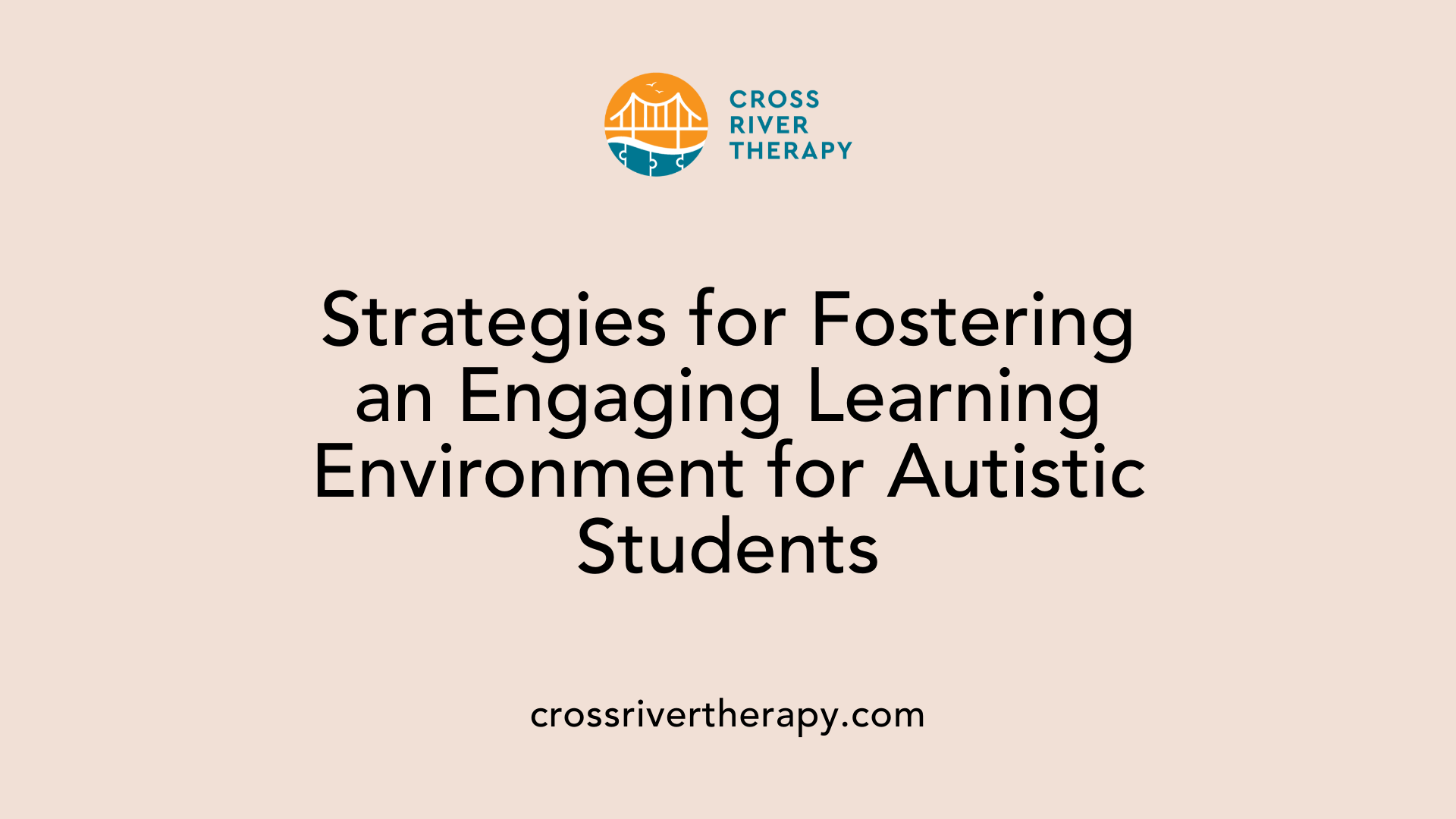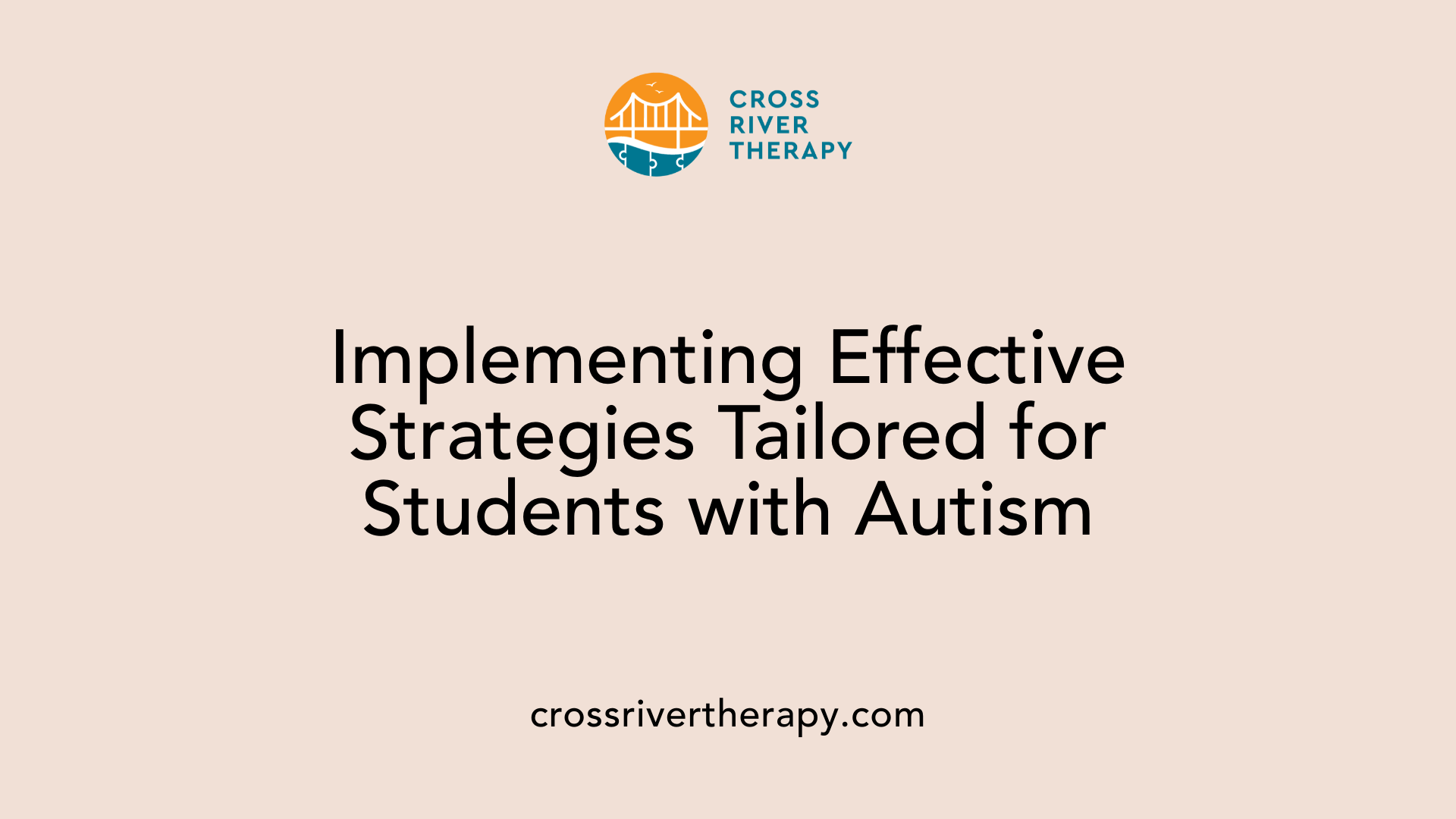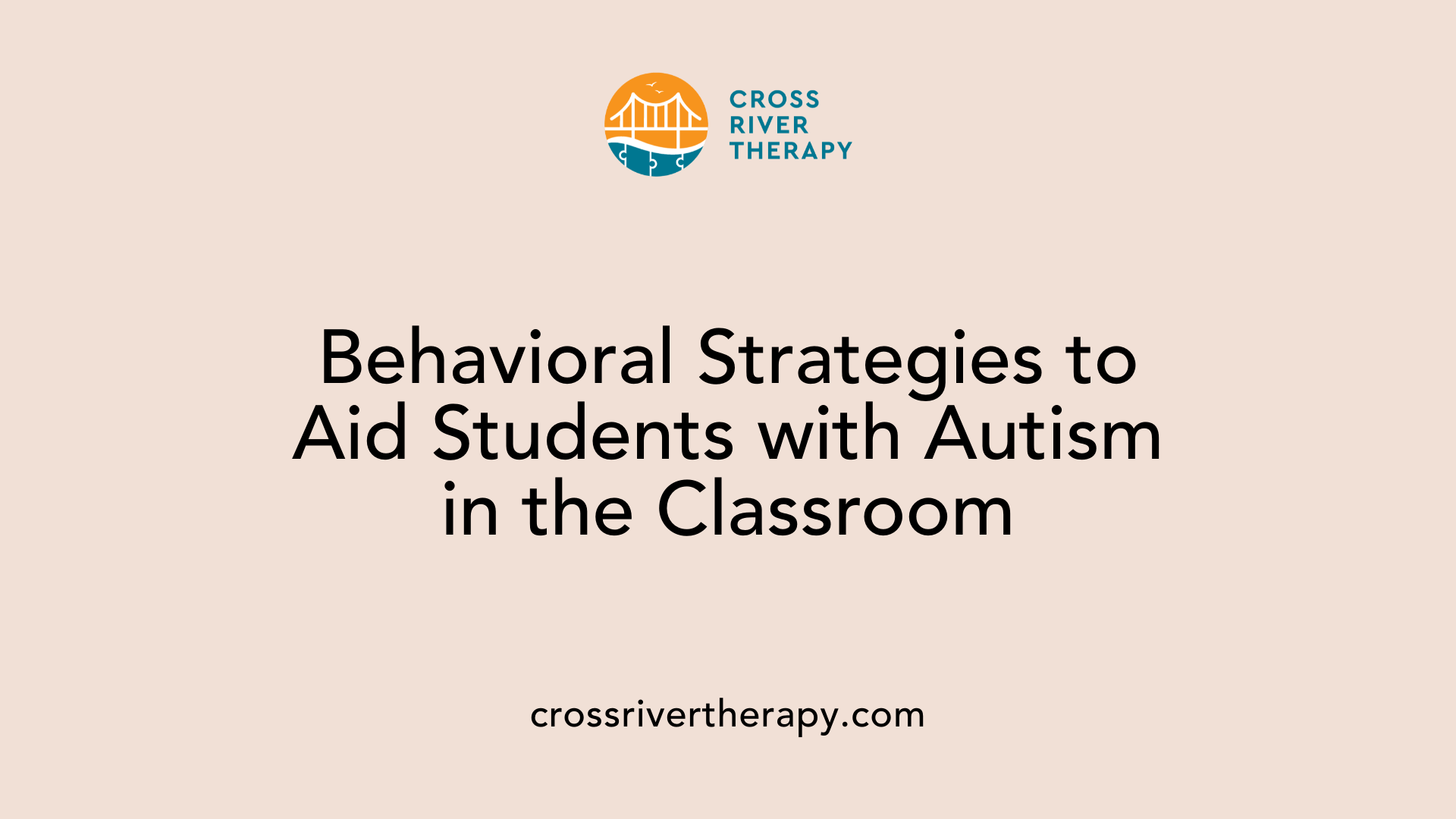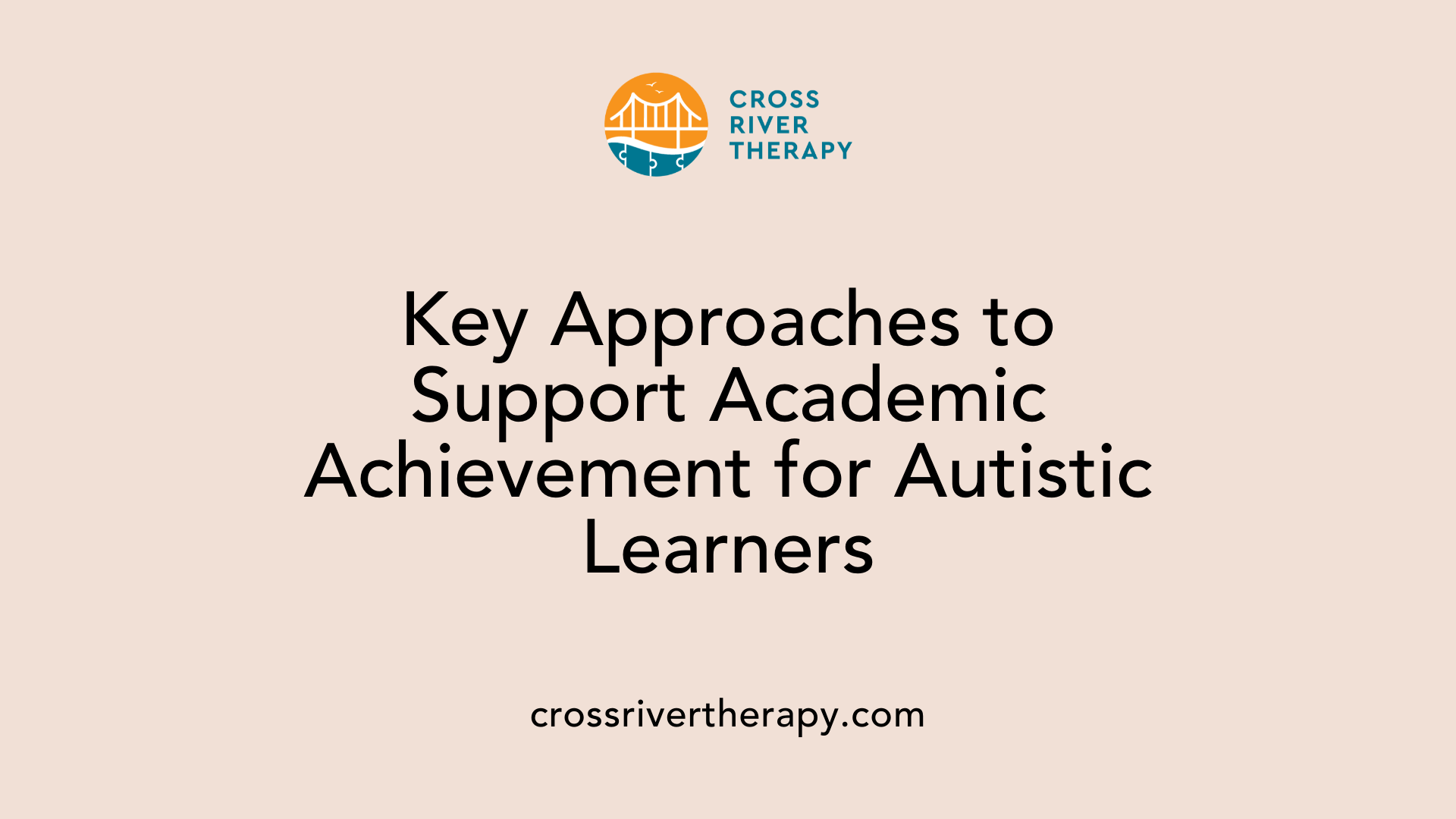Autism Tips for School Success
Strategies to Foster Autistic Students' Success in School
Introduction
Supporting autistic students in school is critical for their academic success and personal development. For families, educators, and the students themselves, navigating school environments can present unique challenges and opportunities for growth. This article explores strategies and evidence-based practices to enhance the educational experiences of children with autism, ensuring they thrive in inclusive learning environments.
Creating Supportive Classroom Environments

What strategies can help autistic students in the classroom?
Creating a supportive environment for autistic students begins with modeling calm behavior. A positive and respectful atmosphere reduces anxiety and encourages engagement. This is further supported by utilizing 'About Me' information sheets that reveal each student's unique needs, fears, and preferences, enabling tailored interactions.
Establishing clear routines and employing visual schedules provide students with predictability, significantly reducing anxiety during transitions. Visual aids can help students grasp daily activities and expectations easily. These tools ensure that students know what to expect next, which is crucial for their comfort and engagement.
Addressing sensory issues is paramount in fostering focus. For instance, using noise-canceling headphones and creating sensory-friendly spaces can help minimize distractions and sensory overload. Establishing designated quiet areas allows students to regroup when overwhelmed, improving their overall learning experience.
Additionally, teaching social skills is essential. Direct instruction combined with role-playing can effectively enhance students' interactions with peers. Resources like social stories can prepare students for different social scenarios, reinforcing interaction and acceptance.
Implementing positive reinforcement strategies and breaking assignments into smaller, manageable tasks also aids in engaging students with autism. This supports their educational success and personal growth. Comprehensive training for all educators on autism-specific strategies ensures that they can meet the diverse and evolving needs of their students effectively.
Evidence-Based Instructional Approaches

What evidence-based instructional strategies are there for students with autism?
There are a variety of evidence-based instructional strategies specifically designed for students with autism spectrum disorder (ASD). Federal laws, including the Every Student Succeeds Act (ESSA) and the Individuals with Disabilities Education Act (IDEA), emphasize the importance of using these strategies to improve educational outcomes. The National Professional Development Center on Autism Spectrum Disorder has identified 27 evidence-based practices (EBPs) that are effective in enhancing both academic and behavioral development for students with ASD.
Some of these effective strategies include:
- Antecedent-Based Interventions: These strategies focus on modifying the environment or conditions that precede a behavior to reduce undesirable outcomes.
- Discrete Trial Teaching: This structured approach breaks down skills into small, manageable components, allowing for focused teaching that can enhance learning.
- Functional Behavior Assessments: These assessments help identify the reasons behind specific behaviors, enabling educators to develop targeted interventions.
- Peer-Mediated Instruction: This involves pairing students with autism with typically developing peers, fostering social interactions and enhancing learning through collaboration.
Moreover, implementing individualized approaches and modifications, such as utilizing concrete materials and providing clear, visual schedules, can significantly improve educational experiences and outcomes. These strategies not only promote academic success but also help foster essential life skills in students with autism.
Understanding Behavioral Challenges and Solutions

What are some behavioral strategies for students with autism?
Some effective behavioral strategies for students with autism include establishing a predictable routine and using visual schedules to help children transition between activities smoothly. Here’s how these approaches can be implemented:
- Predictable Routines: Children with autism thrive on structure. A consistent daily schedule eases anxiety, as they know what to expect throughout their day.
- Visual Schedules: Using pictures and symbols for daily activities helps students understand and anticipate routines, promoting comfort in their day-to-day activities.
- Positive Reinforcement: Implementing reward systems can motivate students to repeat desirable behaviors. Combining this with specific praise encourages a positive learning environment.
Additionally, allowing children to make choices can foster a sense of control. This empowerment often leads to reduced resistance during tasks.
- Coping Skills: Teaching tailored coping strategies can significantly benefit students when they experience overwhelming feelings. Tools like calming corners and sensory items are effective here.
- Behavior Validation: It's essential to approach interactions with a calm demeanor and validate children's emotions to help them feel understood. This not only builds trust but also encourages open communication regarding their feelings.
Summary Table of Strategies for Behavioral Management
| Strategy Type | Description | Benefits |
|---|---|---|
| Predictable Routines | Establish clear schedules for daily activities | Reduces anxiety and promotes security |
| Visual Schedules | Use images to outline activities | Aids understanding and transitions |
| Positive Reinforcement | Reward positive behaviors | Boosts motivation and encourages repeat |
| Coping Skills | Teach strategies for managing emotions | Equips students with tools to cope |
| Behavior Validation | Acknowledge children's feelings | Fosters trust and communication |
By employing these strategies, educators and parents can create a nurturing and effective learning environment for students with autism.
Navigating School Challenges for Autistic Students
Why is school challenging for autistic students?
School environments can present multiple challenges for autistic students, stemming from the unique characteristics of autism spectrum disorder (ASD) that affect their learning styles. One of the most formidable obstacles is sensory overload, with bright lights, loud noises, and bustling activities overwhelming their senses. This constant barrage can lead to heightened anxiety and difficulty concentrating.
Social interactions also pose a significant challenge. Many autistic students may find it hard to interpret social cues or understand body language, making it difficult to establish friendships or engage in collaborative activities. Such struggles can contribute to feelings of isolation in a school full of peers.
Changes in routine or unexpected events, which are rampant in educational settings, can induce anxiety in autistic students. These individuals often thrive in structured environments, and any deviation from established routines can disrupt their learning processes.
Lastly, executive functioning issues can complicate the ability to switch between tasks or manage assignments effectively. This limitation can hinder their performance and lead to frustration during a typical school day. Overall, the misalignment between the school environment and the specific needs of autistic students creates significant barriers to effective learning and socialization.
Concluding Summary of Challenges
| Challenge | Description | Strategies for Support |
|---|---|---|
| Sensory Overload | Overwhelming sensory stimuli in the environment | Create sensory-friendly spaces and reduce distractions |
| Social Interactions | Difficulty interpreting social cues | Directly teach social skills and encourage peer interaction |
| Routine Changes | Stress caused by schedule shifts | Establish clear routines and prepare students for changes |
| Executive Functioning | Difficulty managing tasks and transitions | Use visual schedules and break tasks into manageable steps |
Comprehensive Intervention Programs
What interventions can support students with autism?
Interventions supporting students with autism are diverse and tailored to meet individual needs. Among the most effective are Applied Behavior Analysis (ABA), Cognitive Behavioral Intervention (CBI), and Social Skills Training (SST). Each method aims to bolster communication, enhance social interactions, and improve overall functioning, creating a more supportive educational experience.
Applied Behavior Analysis
ABA is grounded in the principles of behaviorism, focusing on reinforcing desired behaviors while reducing challenging ones. This structured approach uses rewards to encourage positive behaviors, making it an effective strategy for many students with autism.
Cognitive Behavioral Intervention
CBI addresses the thoughts and feelings underlying certain behaviors. Through structured activities and discussions, it helps students develop coping strategies and manage anxiety, which can be particularly beneficial during stressful situations such as school transitions or social interactions.
Social Skills Training
SST is crucial for guiding students in understanding social cues and interacting effectively with peers. This method often employs role-playing and social stories to practice various social scenarios, fostering the development of essential communication skills.
Early Intervention Importance
Early intervention is vital for maximizing developmental outcomes. Strategies may include playful learning, occupational therapy, and speech therapy, promoting daily living skills and emotional growth. Programs like the Early Start Denver Model (ESDM) engage young children in interactive play, helping them progress in communication and social skills. When considering interventions, it's crucial to recognize that each student is unique; what works for one may not work for another. Tailoring programs to individual strengths and challenges ensures a more effective support system for students with autism.
Promoting School Success for Autistic Students

How can autistic students succeed in school?
Autistic students can thrive academically by incorporating strategies tailored to their unique needs and strengths. One effective approach is embracing special interests. Teachers can integrate these passions into lesson plans, making learning more engaging and relevant, thus boosting motivation.
Creating structured routines is crucial as well. A consistent daily schedule helps reduce anxiety and uncertainty. Utilizing visual schedules allows students to anticipate upcoming tasks and transitions, enhancing their ability to focus on academic goals.
Visual aids play an essential role in improving understanding and communication. Teachers should employ tools such as picture schedules, charts, and flashcards. These resources can clarify expectations and support learning activities, reducing confusion.
Furthermore, involving autistic students in goal-setting promotes self-advocacy. Encouraging them to set individual SMART (Specific, Measurable, Achievable, Relevant, Time-bound) goals allows for ownership over their educational journey and fosters a sense of accomplishment.
Summary of Key Strategies
| Strategy | Description | Benefit |
|---|---|---|
| Embrace Special Interests | Integrate personal interests into lessons | Increases engagement and relevance |
| Create Structured Routines | Establish clear daily schedules | Reduces anxiety and uncertainty |
| Use Visual Aids | Implement tools like schedules and charts | Enhances understanding and focus |
| Encourage Goal-Setting | Empower students to set personalized objectives | Fosters self-advocacy and ownership |
Preparing for Transitions Back to School
Practice School Routines
Establish a consistent daily routine to ease the transition for children with autism. Practicing these routines at home several weeks before school starts helps them feel more secure and prepared. Set aside time to review morning schedules, after-school activities, and what to expect during school hours.
Familiarize with School Environment
Taking a tour of the school before the first day is crucial. Visit key areas like the classroom, cafeteria, and gym to help reduce anxiety regarding new surroundings. Practicing routes to essential locations, such as the nurse's office and restrooms, ensures your child knows what to expect.
Open Parent-School Communication
Engage openly with teachers and school staff about your child's unique needs. Share insights from the ‘About Me’ information sheet and ensure staff are familiar with the Individualized Education Plan (IEP) to provide appropriate support from day one.
Sensory-Friendly Supplies
Prepare a school supplies kit that includes sensory-friendly items, such as fidget toys or noise-canceling headphones, to help manage sensory sensitivities throughout the school day. Ensuring these tools are readily available can foster comfort and focus.
Strengthening Community Connections and Support
Collaborating with Parents and Educators
Collaboration between educators and parents is vital for the success of students with autism. Regular communication about each child’s unique strengths, needs, and progress ensures that the strategies implemented in school are aligned with their home environment. This partnership fosters a supportive atmosphere where teachers can tailor their approaches based on parental insights.
Role of IEPs
Individualized Education Plans (IEPs) are instrumental in addressing the specific academic and developmental needs of students on the autism spectrum. These plans outline measurable goals and necessary accommodations, providing clear guidance for educators to facilitate learning in a structured manner. Ongoing reviews and updates of IEPs contribute to the adaptability of educational strategies, catering to evolving student needs.
Inclusive Environments
Creating inclusive environments in schools benefits all students. By accommodating different learning styles and fostering acceptance, educational settings become places where students with autism can thrive alongside their peers. Engaging with the community through events and programs that promote understanding enhances social interactions and builds a stronger school community.
Mentor Support
Mentor programs are a powerful resource for students with autism, offering them the opportunity to connect with peers or older students who understand their experiences. These relationships can help autistic students navigate social interactions, practice essential life skills, and build confidence in a safe environment, reinforcing their educational journey.
Additional Resources for Educators and Parents

Supplementary Educational Tools
Educators can utilize various resources to support their teaching efforts. Visual aids such as picture schedules and social stories can help autistic students understand classroom rules and expectations more clearly. Additionally, technology, including educational apps and assistive devices, can aid communication and learning processes for students.
Training Resources
Professional development programs focused on autism awareness and strategies are key for educators. Workshops, webinars, and online courses can improve teaching methods, making them more effective for students with autism. Schools may offer in-house training or collaborations with local agencies.
Community Organizations
Organizations such as the Autism Society and local support groups provide resources, training, and avenues for collaboration. Engaging with these entities can connect parents and educators with valuable information, programs, and events tailored for autistic children.
Support Networks
Building a network among teachers, parents, and professionals is essential. Consider joining forums, attending community events, or engaging in social media groups focused on autism support. These networks offer shared experiences, resources, and emotional support that can be invaluable during challenges.
Conclusion
Empowering autistic students in school environments requires a comprehensive, inclusive, and personalized approach. By integrating evidence-based practices, fostering community collaboration, and understanding each student's unique needs, educators and families can significantly enhance the educational experience for children with autism. Emphasizing strengths and supporting challenges not only prepares these students for success in school but also lays a foundation for their lifelong growth and achievement.
References
- Autism in the classroom: Strategies for success
- Back to School: 17 Tips to Help Autistic Kids | Autism Speaks
- 10 School-Success Strategies for Students with Autism
- Autism Tips for School Success - Supportive Care ABA
- Autism and Academic Performance: Tips for Success
- Autism Tips for School Success - Goldstar Rehabilitation
- Preparing for a New School Year with Autism
- 50 Back-to-School Tips from Autism Moms - AngelSense



